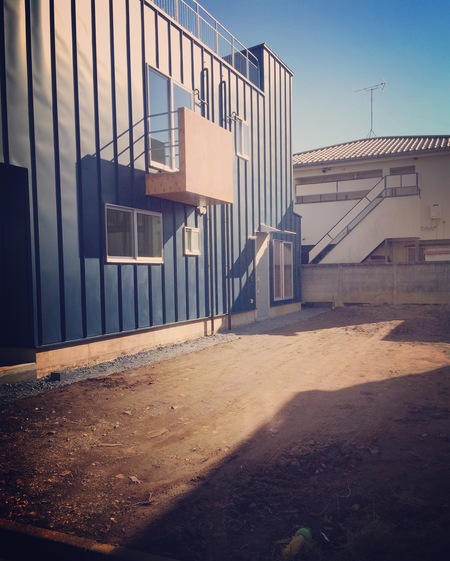文脈/コンテクストを読み取る
全く同じ条件でも、建築する敷地が違うと、例えば、何も無い野山、郊外の分譲地、都市のど真ん中、などのように違うと、当然出来上がる建築は違うはずと、考える前から当たり前のように思ってしまう。
それは、その敷地の文脈/コンテクストを読み取り、それに対してどのように構想するかが、建築設計の第1歩だと自然に思っているからだろう。いわゆるコンテクスチュアリズムという考え方。
この考え方には賛否があるが、それは読み取った文脈をどう扱うか、読み取った後の構想の末に出来上がった建築に賛否が起こるだけで、建築が土地の上に建ち、そこから動けない以上、その土地の素性を読み取るところからはじめるのは当たり前のことで、むしろそれは、建築という行為に対する設計者の誠意だと思う。だって、建売には、そのような考えは存在しないから、野山も分譲地も都市のど真ん中でも同じ物を建てるのだから、部屋数、nLDKを満たすだけだから。
読み取った文脈をどう扱うかという設計者の態度が、敷地をどう読み取るかということにつながる。
この場合、文脈とは、例えば、その敷地や周辺の土地の歴史的背景であったり、街並み、地理的状況、周辺環境、お隣さん、気候気象、敷地の形状や高低、地盤の強弱なども入るかもしれない。
この文脈の中には良いものも悪いものもある。その判断も含めて読み取りだが、その文脈に対して、設計者はどういう態度を取るのか。そのまま受け入れるのか、手を加えるのか、迎合するのか、問題解決するのか、理想に当て嵌めるのか、などなど。
その態度に応じて都合良くその敷地の文脈を読み取ることになる。
この都合良くとは、誰にとって都合が良いのかでも違う。設計者にとって都合が良いのか、特定の個人に対して都合が良いのか、不特定の個人に対してか、不特定の大多数なのか。
住宅などの比較的小規模な建築ならば、そこに住むことになる住人に向けて都合が良くなるように、あるいは、住人をもっと一般化した不特定の個人に向けて都合が良くなるように、集合住宅はこれかな。
美術館や役所などの公共性の高い建築ならば、不特定の大多数にとって都合が良くなるように。
設計者にとって都合が良いということもある。それが作品性につながり、その人が設計する価値が出てくるから。
いずれにしよ、敷地の文脈を読み取る時点で設計がはじまっていることになり、そこからすでに設計者の優劣や、これから建つ建築の良し悪しも決まってくることになる。
"Read Context / Context"
Even under exactly the same conditions, if the site to be built is different, for example, if it is different like Noyama with nothing, suburban selling place, in the middle of a city, etc., the architecture that will be completed will naturally be different, I think.
It seems that it is natural to think that it is the first step in architectural design to read the context / context of the premises and how to conceive it. The idea of what is called Contextualism.
Although there are pros and cons, there is a pros and cons, but this is because the architecture is built on the land and can not move from there just because pros and cons of the finished architecture is done at the end of the concept after reading, It is commonplace to start from reading the identity of the land, rather it is the designer's sincerity to the act of building. Because there is no such idea in the sale, because Noyama and the selling district build the same thing in the middle of the city, it only satisfies the number of rooms, nLDK.
The attitude of the designer as to how to handle the read context leads to how to read the site.
In this case, the context means, for example, the historical background of the site or the surrounding land, the cityscape, the geographical situation, the surrounding environment, the neighbor, the climate weather, the shape and height of the site, the strength of the ground, etc. It might be.
There are good and bad in this context. Reading including that judgment is read, but what kind of attitude will the designer take for that context? Whether to accept as it is, whether to add a hand, to meet, to solve the problem, to fit the ideal, and so on.
It will conveniently read the context of the site according to its attitude.
What is convenient for this is different for everyone. Is it convenient for the designer, whether it is convenient for a specific individual, for an unspecified individual, or an unspecified majority?
For relatively small-scale buildings such as houses, so that it will be more convenient for residents who will live there, or to become more convenient for unspecified individuals who have more generalized residents , This is the apartment house.
If public buildings such as art museums and government offices are constructed, it will be convenient for the majority of unspecified people.
Sometimes it is convenient for the designer. Because it leads to workability and the person worth designing comes out.
In any case, the design is starting at the time of reading the context of the premises, from which the superiority of the designer and the good or bad of the architecture to be built will be decided.


コメント